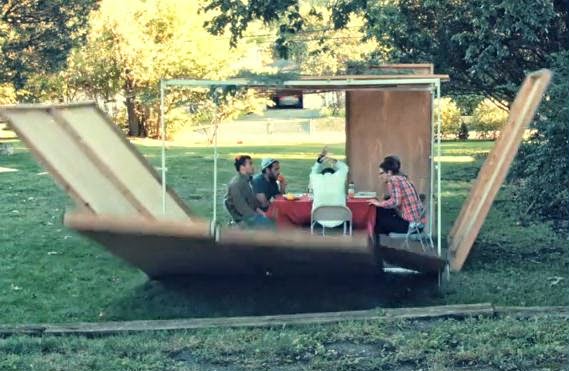Beitza 30b (2)
1- We discussed the sugya of the מקצה מחמת מצוה.

נוי סוכה
The classic example is the Sukkah. Once the Sukkah is built and Yom Tov begins, one may not use any portion of it for personal use, including the נוי סוכה. This applies even if the Sukkah was demolished for whatever reason.

Now can we use the walls for something else?
Our Gemara quotes Reb Akiva and Reb Yehuda Ben Beseirah who base this מוקצה of the Sukkah by comparing it to the קרבן חגיגה: Just as a Korban is holy and cannot be used for anything but a Korban, similarly, a Sukkah is sanctified for the entire 7 days of Sukkos.
(Actually until the end of Simchas Torah, plus; we’ll discuss this next week bl”n)
2- We discussed the opinion of the Rambam that this מוקצה applies to the walls as well as to the סכך . Most other Rishonim argue and say it applies only to the סכך; the walls are מקצה only מדרבנן. The Alter Rebbe agrees with them.

2 walls and a tefach
3- We quoted the opinion of Rabbeinu Tam in Tosfos that this Muktzah Min Hatorah applies only to the very minimum needed to build a Sukkah Min Hatora, i.e. two walls and a tefach. The rest is only מדרבנן.
4- This concept is used elsewhere. We mentioned the question asked to the תשורת שי. concerning an addition built to a shul as a temporary Ezras Noshim. Years passed and a Mikvah was proposed to be built in that addition. No one recalled if this addition was ever actually used as a Shul which would preclude changing its status.
The תשורת שי uses the idea of Rabbeinu Tam that the addition is not considered part and parcel of the Shul despite it being attached to the Shul.

5- We had a heated debate about the next piece of Gemara which discusses the issue of whether a (stipulation) תנאי can be made prior to Yom Tov that would remove the sanctity of the סכך walls or the decorations of the Sukkah in case the Sukkah would fall.
In short: The Beraisa says about the wood of a Sukkah that if one makes a condition תנאי and expresses his intent to use the wood of the Sukkah on Yom Tov, then the תנאי works to permit him to use the wood.
However, the תנאי works only for the wood of a Sukah on a Yom Tov other than Sukkos – e.g. a hut on Pesach.
On Sukkos itself, a תנאי does not work to permit the use of the wood of a Sukkah-Shel-Mitzvah because the Torah gives Kedushah to such a Sukkah at the moment Yom Tov enters. As soon as Bein ha’Shemashos arrives the Sukkah becomes designated for use as a Sukkah and its wood may not be used for any other purpose.
6- Similarly, can one can make a תנאי when lighting the Shabbos candles that when the fire extinguishes the candelabra would become non Muktzah?
The Alter Rebbe quotes 2 opinions and rules like the Ramah that such a condition is should not be used.
7- Discussion about sitting in a Sukkah while its raining. According to the pure Halachah, one is פטור to sit in the Sukkah at that time. So why is it not considered having הנאה (prohibited as above, just like the קרבן חגיגיה) of the Suka when not performing the Mitzvah?
Is it perhaps of the תנאי that we assume one makes before Sukos that the Suka is ‘not a Suka של מצוה’ at such time?
See here from the עונג יו”ט
http://beta.hebrewbooks.org/pdfpager.aspx?req=1104&st=&pgnum=161
8- We spoke about the ancient custom of treating hepatitis or other liver illness with pigeons. Technically speaking, it is supposed to reduce the bilirubin in the patient. (This is the “yellow” the mohel looks for when he inspects the newborn the day before the bris).

…wait, what?!
As the custom goes, placing a healthy pigeon on the navel of the patient is supposed to draw out the illness from the patient into the pigeon, which soon dies. This is repeated until the last pigeon placed on the patient remains alive.
Keep healthy.

